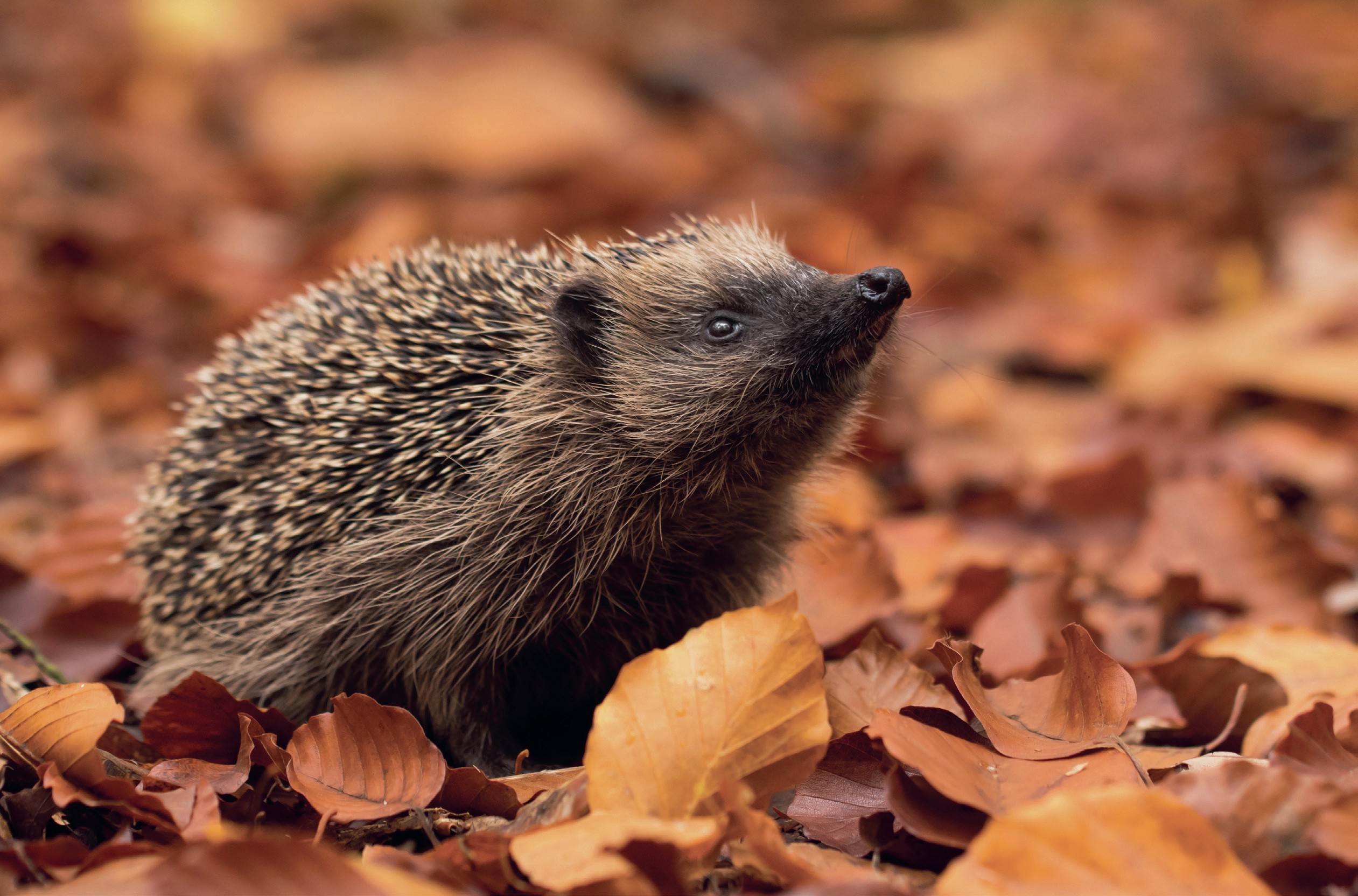
Hedgehogs are found across most of the world. There are 17 species, and Erinaceus europaeus is the European hedgehog, the subject of this article. Hedgehogs live in a variety of different habitats and can thrive in both urban and rural environments. These small mammals are nocturnal. They roam over a wide range at night in search of food (see Box 1) and, during the breeding season, mates. Radio tracking studies show that they have a range of about 10 hectares (24.7 acres) and travel distances up to 2km in urban areas and up to 3km in rural environments. They are quick runners, good climbers and adept swimmers.
Hedgehogs are the only mammals in the UK with spines. An adult hedgehog has 5000–7000 sharp spines covering its back and sides. The spines are 2–3cm long and are made of keratin, the material that forms hair and nails. When a hedgehog is threatened, it contracts two strong muscles on its back to curl into a tight spiky ball, concealing the fleshy, vulnerable parts of its body from predators.
Your organisation does not have access to this article.
Sign up today to give your students the edge they need to achieve their best grades with subject expertise
Subscribe




